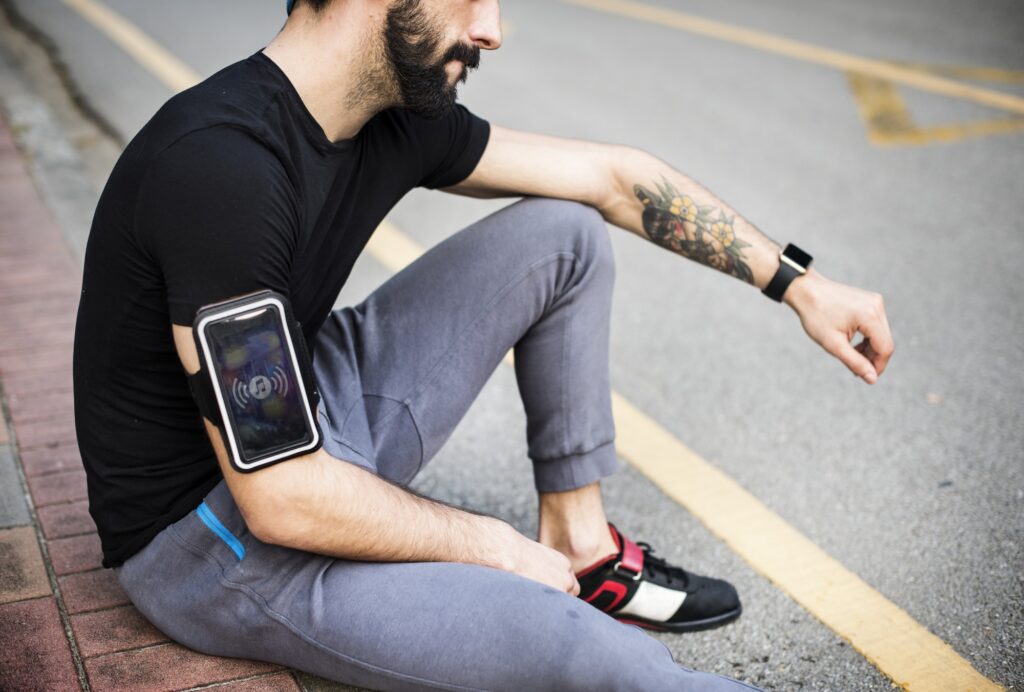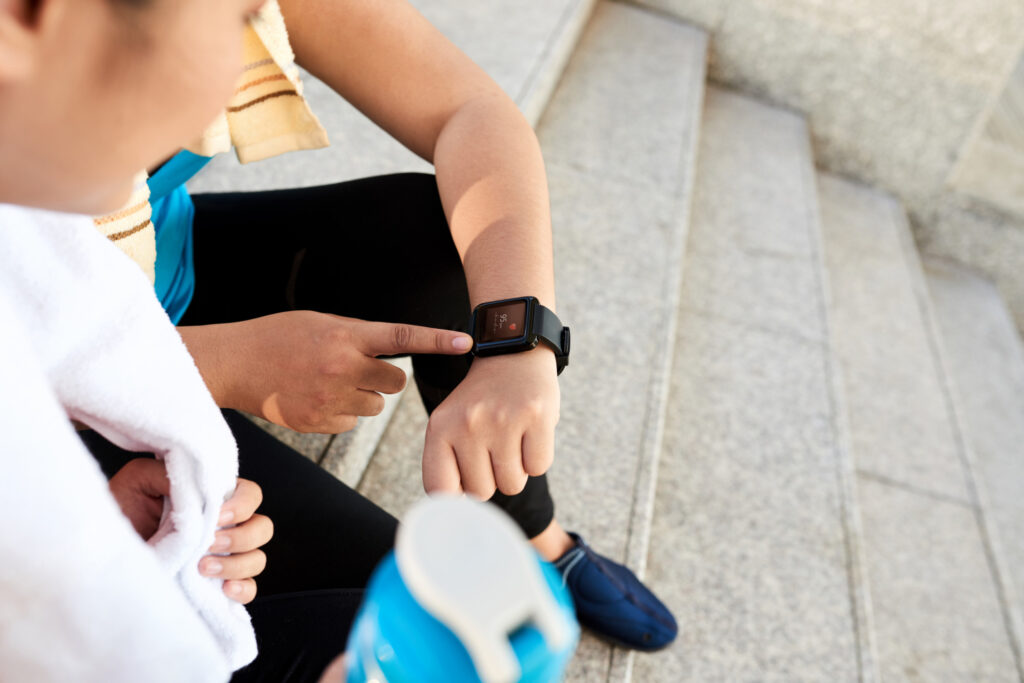Can Fitness Trackers Measure Blood Pressure?

In the fast-paced world of health and fitness, fitness tracker have become an indispensable tool. From counting steps to monitoring sleep patterns, these gadgets keep track of various metrics to ensure users maintain a healthy lifestyle. One of the most sought-after features in fitness tracker is blood pressure monitoring. But can fitness tracker really measure blood pressure accurately? Let’s dive into the details and clear up the confusion.
Table of Contents
What Are Fitness Trackers and How Do They Work?
Understanding Fitness Tracker
Fitness trackers are wearable devices designed to monitor health metrics such as heart rate, steps, calories burned, and even sleep quality. They use advanced sensors like PPG (photoplethysmography) to measure blood flow and pulse.
How Blood Pressure Monitoring Works in Fitness Tracker
Blood pressure monitoring in fitness tracker typically involves:
- Optical Sensors: Detect blood flow changes under the skin.
- Pulse Wave Velocity (PWV): Measures the speed of blood flow in arteries, which is used to estimate blood pressure.
- Calibration: Many fitness tracker require pairing with a traditional cuff-based monitor for accurate readings.
Can Fitness Trackers Accurately Measure Blood Pressure?
The Science Behind It
Fitness trackers measure blood pressure using algorithms that rely on heart rate and PWV. These methods provide an estimation rather than a precise reading.
Factors Influencing Accuracy
- User Movement: Activity during measurement can affect results.
- Skin Type: Tattoos or darker skin tones may interfere with sensor readings.
- Calibration: Devices must be calibrated frequently for reliable performance.
Popular Fitness Trackers with Blood Pressure Monitoring

1. Cuff-Based Trackers
These devices combine traditional blood pressure cuffs with wearable technology.
- Example: Omron HeartGuide offers clinical-grade accuracy.
2. Cuffless Trackers
Convenient and stylish but less accurate without regular calibration.
- Examples: Samsung Galaxy Watch, Fitbit Sense.
Both options highlight how fitness tracker are evolving to include blood pressure monitoring while balancing accuracy and convenience.
Advantages of Using Fitness Trackers for Blood Pressure
- Convenience:
- Fitness trackers are lightweight and wearable, allowing users to monitor blood pressure anytime.
- Health Insights:
- Many fitness tracker provide detailed trends over time, helping users identify patterns.
- Real-Time Alerts:
- Some fitness tracker notify users of irregular readings, prompting early medical intervention.
Limitations of Fitness Trackers in Blood Pressure Measurement
- Accuracy Issues:
- While fitness trackers are improving, they still lag behind traditional monitors.
- Not for Diagnosis:
- The data from fitness tracker is ideal for tracking trends but not suitable for medical diagnoses.
- Calibration Needs:
- Regular recalibration is a must for reliable readings, which may inconvenience some users.
Fitness Trackers vs. Traditional Blood Pressure Monitors
| Feature | Fitness Trackers | Traditional Monitors |
| Portability | High | Low |
| Accuracy | Moderate | High |
| Ease of Use | Very Easy | Moderate |
| Cost | Moderate to High | Moderate |
This comparison underscores that while fitness trackers are handy, traditional monitors remain the gold standard for accuracy.
Future of Blood Pressure Monitoring in Fitness Trackers

Technological Advancements
- Enhanced sensors in fitness trackers will likely close the accuracy gap.
- AI integration will improve health analysis and provide more reliable readings.
Regulatory Approvals
- More fitness trackers are receiving FDA and CE certifications, signaling increased reliability for users.
Conclusion
Fitness trackers are an excellent tool for monitoring overall health and fitness trends, including blood pressure. However, they currently offer estimations rather than clinical-grade accuracy. For anyone managing serious health conditions, fitness trackers should complement, not replace, traditional blood pressure monitors.
With ongoing technological advancements, fitness trackers are set to become even more reliable, bridging the gap between convenience and medical accuracy. Until then, use your fitness tracker as a guide and consult healthcare professionals for precise measurements. You may also be interested in “Is Fitness a Hobby? Exploring Its Dual Nature“
By incorporating a fitness tracker into your routine, you’re taking an active step towards a healthier and more informed lifestyle. Keep an eye on future developments they’re shaping a world where health monitoring is at your fingertips!
FAQs
Do any fitness trackers monitor blood pressure?
Yes, some fitness trackers are equipped to monitor blood pressure. Popular brands like Samsung, Fitbit, and Garmin have introduced models that include blood pressure tracking. However, these devices generally use optical sensors and algorithms, which provide estimations rather than clinical-grade accuracy. Some models, like the Omron HeartGuide, use cuff-based methods for more reliable results, but most rely on periodic calibration with a traditional blood pressure monitor for accurate readings.
Does Fitbit track blood pressure?
Fitbit does not currently offer a device that directly measures blood pressure. However, Fitbit devices focus on other vital health metrics, such as heart rate, heart rate variability, and stress levels, which can provide insights into cardiovascular health. Fitbit has hinted at exploring blood pressure monitoring features for future devices, but for now, users should rely on dedicated blood pressure monitors for precise measurements.
Can I check my BP on my smartwatch?
Yes, several smartwatches offer blood pressure monitoring. For example, Samsung’s Galaxy Watch series provides this feature using a combination of optical sensors and software. However, these readings are often estimations and require regular calibration with a cuff-based blood pressure monitor to maintain accuracy. If you’re looking for precise blood pressure data, it’s best to use a medical-grade device alongside your smartwatch for comparison.
Can you measure blood pressure while exercising?
Measuring blood pressure during exercise is challenging even for advanced devices. Most fitness trackers and smartwatches are not designed to provide accurate blood pressure readings while you are in motion. The sensors may struggle to detect blood flow correctly due to increased heart rate and physical movement. For reliable readings, it’s better to measure blood pressure before or after exercise when you’re at rest.
Can I exercise if my blood pressure is 140/90?
Yes, exercise can be beneficial even if your blood pressure is 140/90, which is considered the threshold for hypertension. Regular physical activity can help lower blood pressure over time. However, it’s crucial to consult your healthcare provider before starting a workout routine, especially if you have other risk factors or health conditions. Moderate-intensity exercises like walking, cycling, and swimming are often recommended for individuals with high blood pressure.
How bad is 160 over 80 blood pressure?
A blood pressure reading of 160/80 is considered stage 2 hypertension. The systolic pressure (160) is significantly elevated, which increases the risk of heart disease, stroke, and other complications if left unmanaged. It is essential to consult a healthcare provider to develop a treatment plan that may include lifestyle changes, medications, or a combination of both. Early intervention can prevent long-term health issues associated with high blood pressure.



One Comment